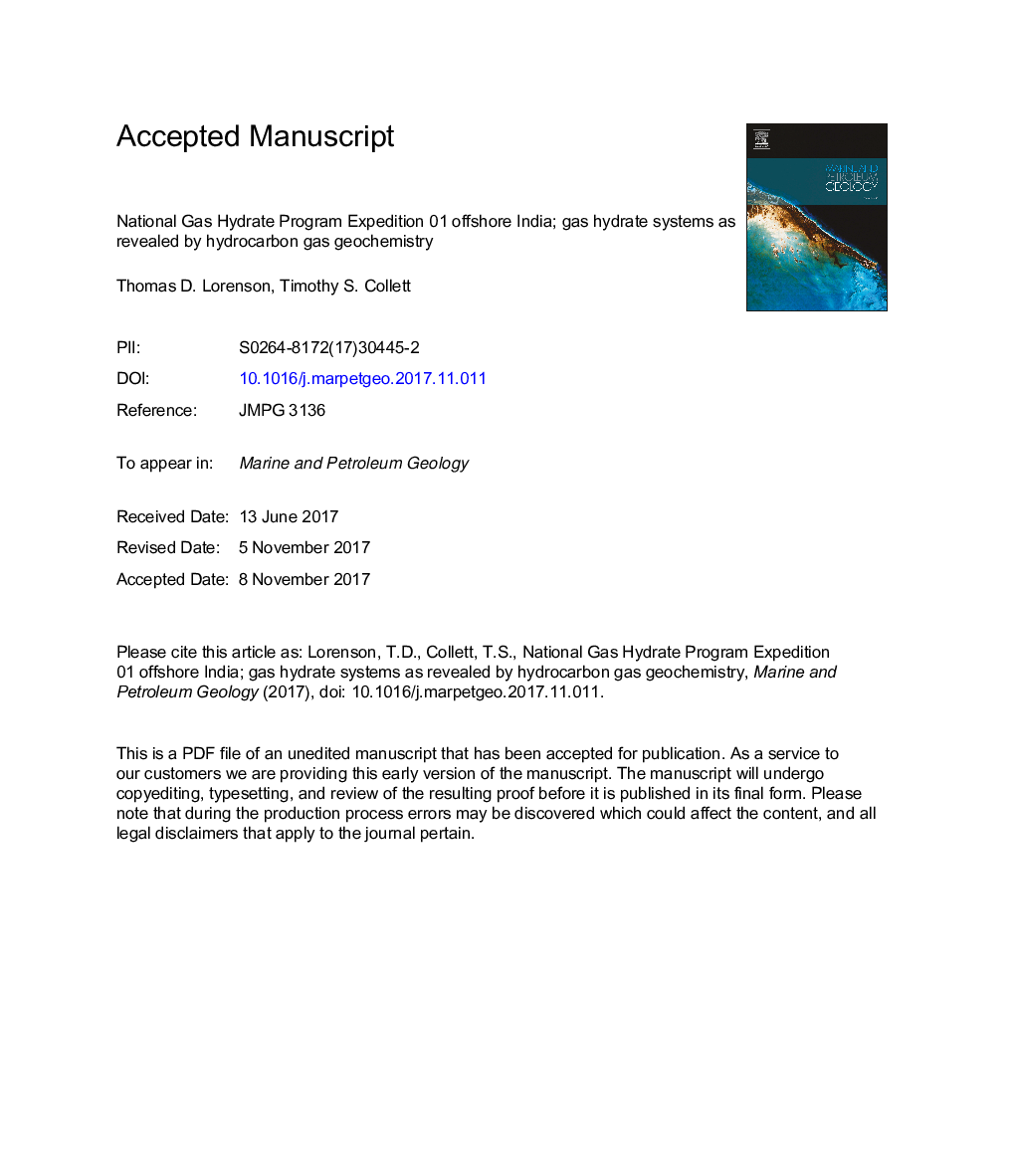| Article ID | Journal | Published Year | Pages | File Type |
|---|---|---|---|---|
| 8909137 | Marine and Petroleum Geology | 2018 | 64 Pages |
Abstract
The Kerala-Konkan Basin well contained only CO2 with no detectable hydrocarbons suggesting there is no gas hydrate system here. Gas and gas hydrate from the Krishna-Godavari Basin is mainly microbial methane with δ13C values ranging from â58.9 to â78.9â°, with small contributions from microbial ethane (â52.1â°) and CO2. Gas from the Mahanadi Basin was mainly methane with lower concentrations of C2-C5 hydrocarbons (C1/C2 ratios typically >1000) and CO2. Carbon isotopic compositions that ranged from â70.7 to â86.6â° for methane and â62.9 to â63.7â° for ethane are consistent with a microbial gas source; however deeper cores contained higher molecular weight hydrocarbon gases suggesting a small contribution from a thermogenic gas source. Gas composition in the Andaman Basin was mainly methane with lower concentrations of ethane to isopentane and CO2, C1/C2 ratios were mainly >1000 although deeper samples were <1000. Carbon isotopic compositions range from â65.2 to â80.7â° for methane, â53.1 to â55.2â° for ethane is consistent with mainly microbial gas sources, although one value recorded of â35.4â° for propane suggests a thermogenic source. Gas hydrate accumulations in the Krishna-Godavari and Mahanadi Basins are the result of a microbially sourced gas hydrate system. The system is enhanced by the migration of microbial gas from surrounding areas through pathways including high-porosity delta sands, shale diapirism, faulting and folding of sediment due to the local processes associated with rapid sediment deposition, sediment overpressure, and the recycling of methane from a rapidly upward moving gas hydrate stability zone. The gas hydrate system in the Andaman Basin is less well constrained due to lack of exploration and occurs in a forearc basin. Each of these hydrate-bearing systems overlies and is likely supported by the presence and possible migration of gas from deeper gas-prone petroleum systems currently generating thermogenic hydrocarbons at much greater depths.
Related Topics
Physical Sciences and Engineering
Earth and Planetary Sciences
Economic Geology
Authors
Thomas D. Lorenson, Timothy S. Collett,
